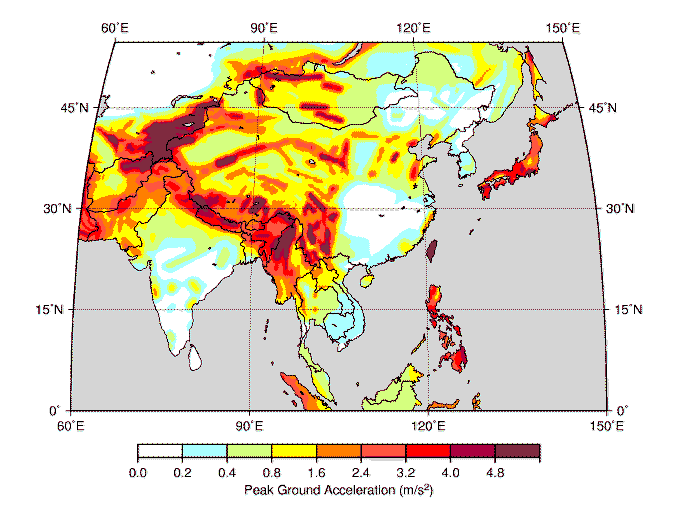An interesting paper has been published in Nature Geoscience by Murphy et al.: Limit of strain partitioning in the Himalaya marked by large earthquakes in western Nepal. It doesn’t happen too often that paleoseismological papers are published in this journal and it’s also not too often that authors publish such beautiful photos. The authors identified a more than 60 km long rupture in W Nepal with 10 m of surface offset (strike-slip with a normal component). 14C dating points to seismic activity between AD 1165 and 1400. That’s pretty surprising for many reasons:
- The seismic events are relatively young and seem to have been quite strong, so I think chances are not too bad to have some reports on these events (although I have to admit that I have no idea about the quality of written sources from this region). It’s surprising that the associated structure has not been looked for and found before.
- The offset is huge and the earthquake environmental effects are beautiful, including surface ruptures, offset streams and so on. From the photo (figure 3) is appears like it’s easy to recognize them in the field.
- The structure is so long (60+ km) that it should also be visible from satellite imagery.
The authors claim “that the active fault we identified is part of a larger fault system, the Western Nepal Fault System, which cuts obliquely across the Himalaya.” They conclude that with their new data the seismic hazard maps might have to be redrawn for this region. This is basically why paleoseismology is so important: When earthquake recurrence intervals are in the order of thousands of years and instrumental seismicity data is available for 100 years only, there is an obvious problem.

Seismic hazard map of Asia, from the Global Seismic Hazard Assessment Program (GSHAP): http://www.seismo.ethz.ch/static/gshap/
References:
- Bhatia, S.C., Kumar, M.R. & Gupta, H.K. 1999. A probabilistic Seismic Hazard Map of India and adjoining regions. Annals of Geophysics, 42 (6), 1153-1164.
- Bilham, R., Gaur, V.K. & Molnar, P. 2001. Himalayan Seismic Hazard. Science, 293, 1442-4.
- Murphy, M.A., Taylor, M.H., Gosse, J., Silver, C.R.P., Whipp, D.M. & Beaumont, C. 2013. Limit of strain partitioning in the Himalaya marked by large earthquakes in western Nepal. Nature Geoscience, doi:10.1038/ngeo2017. Supplementary data (free): http://www.nature.com/ngeo/journal/vaop/ncurrent/extref/ngeo2017-s1.pdf



No Comments
No comments yet.